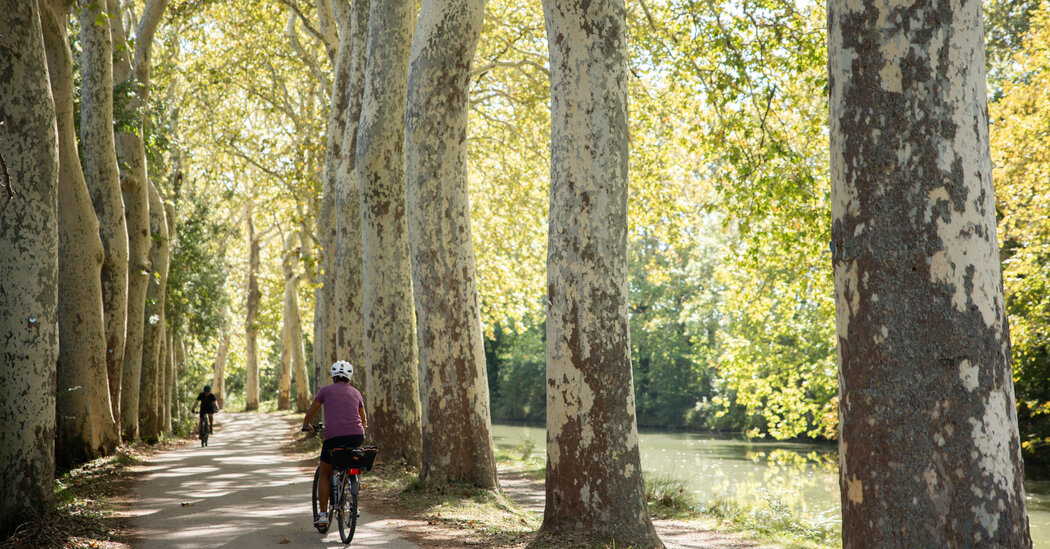The Canal du Midi, entirely hand-dug and hailed as an engineering marvel on completion in 1681, offers a refreshing alternate take on French travel: a bikeable path through the towns and landscapes of the country’s south. Traversing Occitanie, the canal gives cyclists of all skill levels access to parts of France that are rich in history, yet sometimes passed over by visitors with (only) Paris on their mind.
When I discovered that the canal was manageable for nonserious cyclists like me, I was hooked. Stretching from the city of Toulouse to the Mediterranean port town of Sète, the 150-mile waterway offers mostly flat cruising for the thousands of riders who take to its towpaths every year.
For nearly a week in July, I cycled upstream from Sète as far as Toulouse. I rented an electric bike and other gear from Paulette, a rental company that focuses on canal tourists. The rental totaled about $400. I also took advantage of the group’s super-convenient send-ahead luggage service. That lightened my load to take on the canal, its large and small towns, and its historical undercurrents. I wanted to see its famous écluses, or oval-shaped locks, and the idyllic country scenes on the way. I didn’t really plan ahead — as a novice, I didn’t know how far my legs could take me. Given my fluid schedule, I opted to find accommodation via the canal’s abundant tourist offices after arriving wherever I chose to stay the night.
Up a canal with a rented bike
The road from Sète starts at the sea. The former fishing town, where I picked up my bike as well as side bags for the essentials I wasn’t sending onward, ranks as a low-key favorite among French and foreign visitors. I pedaled southwest out of town on a Saturday morning, the shimmering Mediterranean to my left.
Starting at one end of the original canal helped me appreciate the ambition of the waterway’s visionary builder. Pierre-Paul Riquet, born in nearby Béziers in the early 1600s, conceived of the Canal du Midi as just one section of a Canal des Deux Mers — a “two-sea canal” — connecting the Mediterranean with the Atlantic, and stretching from Sète as far as Bordeaux.
Joining the two coasts would open up a lucrative alternate trade route to sailing around Spain and Portugal, and would develop French inland commerce in the process — mostly for the region’s salt, wheat and wine. But how to build a body of water from scratch? Riquet’s “canal of communication,” as he called the full…
Click Here to Read the Full Original Article at NYT > Travel…
